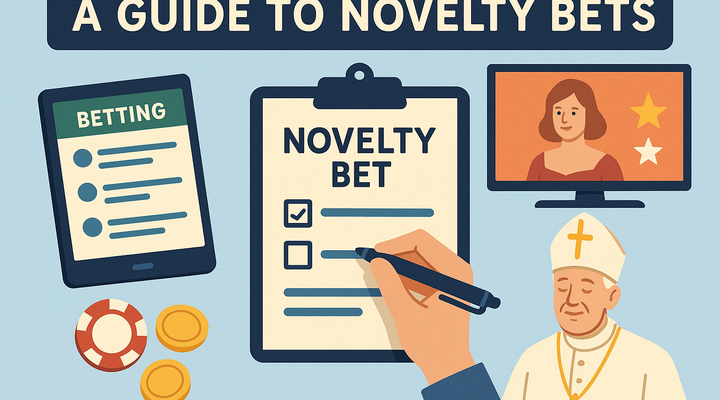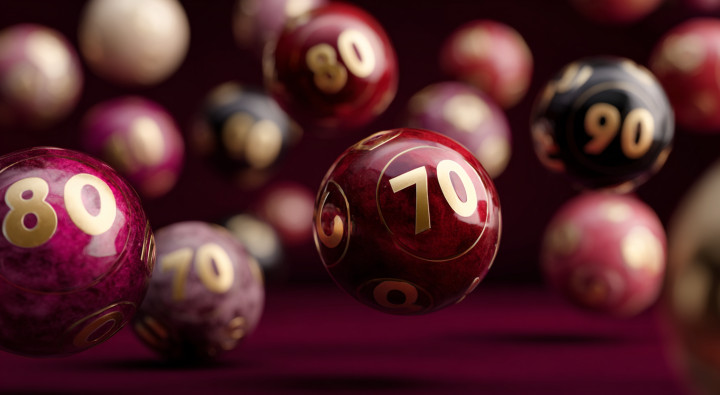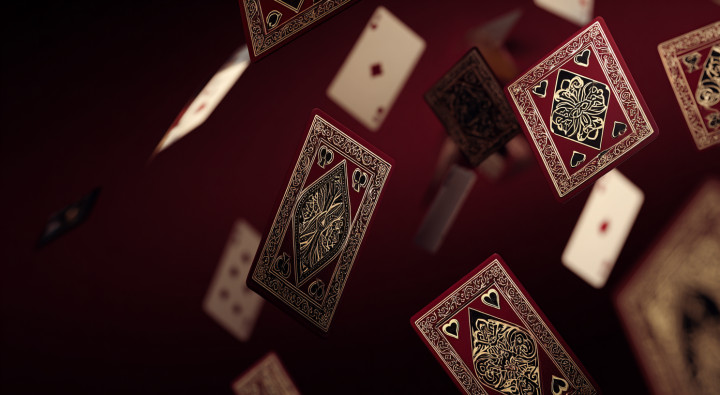What is card counting? Demystifying the maths behind blackjack strategy
Card counting has captured public imagination for decades, transforming from a mathematical curiosity into a cultural phenomenon that bridges the gap between academic probability theory and high-stakes casino drama.
Despite Hollywood portrayals of genius mathematicians outsmarting casinos with supernatural mental abilities, the reality of card counting is both more mundane, but also more fascinating than fiction suggests.
So before you head over to check out the best blackjack sites, get up to speed with what does counting card mean - and how counting cards works - in this guide.
Understanding card counting: the fundamentals
When it comes to luck vs skill in gambling, blackjack is one of those games that requires a certain amount of skill to be successful. One well-known example of this is blackjack card counting - a technique that skilled players use to gain an edge by keeping track of the ratio of high to low cards remaining in the deck. Card counting is by no means the only - or necessarily a recommended - strategy to enhance your chances. But it's proof that certain systems can be learned, unlike casino slot machines, which are entirely luck-based, even though there are steps you can take to stay on top of your slots gaming.
At its core, card counting is a mathematical strategy used in blackjack to track the ratio of high-value cards to low-value cards remaining in the deck or shoe.
Contrary to popular belief, this technique doesn't involve memorising every card that has been played. Instead, card counters use systematic methods to maintain a running tally that helps them determine when the remaining cards favour the player versus the house.
The fundamental principle relies on a simple mathematical truth: when more high-value cards (10s, Jacks, Queens, Kings, and Aces) remain in the deck, players have better odds of achieving blackjack, while dealers are more likely to bust when forced to hit on low totals. Conversely, when low-value cards predominate, the house advantage increases significantly.
Card counting works because blackjack, unlike other casino games, has a memory. Each card dealt affects the probability of future hands, creating situations where the mathematical advantage can shift between player and house. Skilled counters capitalise on these favourable moments by increasing their bets when the odds tip in their favour and minimising losses during unfavourable periods.
As you can probably tell, this is a very advanced technique, so you'll want to master the basics when learning how to play blackjack first.
The mathematics behind the strategy
The most popular card counting system, known as Hi-Lo, assigns point values to different cards: low cards (2-6) receive a value of +1, neutral cards (7-9) are worth 0, and high cards (10-Ace) count as -1. Players maintain a running count by adding these values as cards are revealed, then convert this to a "true count" by dividing each by the estimated number of decks remaining.
When the true count is positive and high, it indicates an abundance of high-value cards remaining, creating ideal conditions for larger bets. A true count of +3 or higher typically signals a significant player advantage, while negative counts favour the house. The mathematical edge gained through perfect card counting ranges from approximately 0.5% to 1.5%, depending on the specific game conditions and counting system employed.
This seemingly modest advantage becomes meaningful over extended play sessions. Professional card counters don't expect to win every hand or even every session. Instead, they rely on the law of large numbers, understanding that their mathematical edge will manifest over thousands of hands, generating consistent profits despite inevitable short-term fluctuations.
High-profile cases and cultural impact
The most famous card counting story involves the MIT Blackjack Team, a group of students and ex-students from Massachusetts Institute of Technology who used sophisticated card counting techniques and team play strategies to win millions from casinos during the 1980s and 1990s. Their exploits - chronicled in Ben Mezrich's book Bringing Down the House and later adapted into the film 21 - captured public fascination with the intersection of mathematical brilliance and gambling.
The MIT team's approach went beyond individual card counting, employing complex team strategies where different members played specific roles. ‘Spotters’ would play minimum bets while counting cards at various tables, signalling to ‘big players’ when suitable conditions arose. This sophisticated operation required extensive training, bankroll management, and careful coordination to avoid detection by increasingly vigilant casino security.
Edward Thorp, a mathematics professor, pioneered modern card counting with his 1962 book Beat the Dealer. Thorp's work provided the first mathematically rigorous analysis of blackjack strategy, proving that the game could be beaten through skilful play. His research laid the groundwork for all subsequent card counting developments and established him as the father of modern blackjack strategy.
Ken Uston became another legendary figure in card counting history, leading successful teams throughout the 1970s and 1980s while fighting legal battles over casinos' rights to exclude skilled players. Uston's court victories in New Jersey established important precedents regarding player rights, though casinos developed increasingly sophisticated countermeasures in response.
Casino countermeasures and detection
Just as they do with edge sorting, modern casinos employ numerous strategies to combat card counting, making successful implementation significantly more challenging than in earlier decades. Continuous shuffling machines eliminate the deck penetration necessary for effective counting, while increased use of six and eight-deck shoes reduces the impact of individual cards on overall probabilities.
Surveillance technology has evolved dramatically, with sophisticated software analysing betting patterns and playing decisions to identify potential counters. Facial recognition systems track known advantage players across multiple properties, creating databases that make it difficult for successful counters to find new venues.
Casinos also employ subtle countermeasures such as frequent shuffling when they suspect counting, limiting bet spreads, or introducing rule variations that reduce player advantages. Heat from casino personnel ranges from increased scrutiny to outright barring, creating psychological pressure that can affect performance even among skilled practitioners.
In the same way as players want assurance that blackjack isn't rigged, casinos will go to great lengths to ensure they're not being taken for a ride either.
The reality vs the myth
Successful card counting requires far more than mathematical ability. Physical and mental stamina play crucial roles, as effective counting demands hours of sustained concentration in distracting casino environments. Emotional control becomes paramount when facing inevitable losing streaks that can span multiple sessions despite maintaining mathematical advantages.
Bankroll management represents perhaps the most critical skill for serious card counters. Even with perfect play, variance ensures significant swings in results. Professional-level card counting typically requires bankrolls of $10,000 or more to withstand normal fluctuations, while generating modest hourly wages that rarely exceed those available through conventional employment.
The social aspects of card counting often prove more challenging than the mathematical components. Maintaining cover while executing strategy requires acting ability, as counters must appear to be recreational gamblers while making mathematically precise decisions. The constant threat of detection creates stress that can impact both performance and enjoyment.
Modern applications and legal considerations
Card counting remains legal in most jurisdictions, as it involves using mental skills rather than external devices or fraudulent practices. However, casinos reserve the right to refuse service to any patron, creating a cat-and-mouse dynamic between skilled players and house security.
Contemporary card counters often focus on finding favourable game conditions rather than relying solely on traditional counting methods. This includes seeking out games with beneficial rules, promotional offers, or dealer errors that create temporary advantages. Some advantage players have moved beyond blackjack entirely, applying similar mathematical principles to other casino games or advantage gambling opportunities.
The principles underlying card counting have found applications in other fields, including financial trading and risk management. The discipline of maintaining mathematical focus while managing psychological pressures translates well to various professional endeavours requiring analytical thinking under stress.
Conclusion
Card counting represents a fascinating intersection of mathematics, psychology, and human performance under pressure. While the romantic notion of beating casinos through pure intellect continues to captivate public imagination, the reality involves dedicated study, significant financial risk, and modest returns for most practitioners.
Understanding card counting provides valuable insights into probability theory, risk management, and the mathematical foundations underlying casino games. Whether pursued professionally or studied academically, card counting demonstrates how mathematical principles can be applied to real-world situations where theory meets practical application. The same is true of chaos theory, another (very different) mathematical concept that has been studied through the lens of casino gambling.
For most people, learning basic card counting serves as an excellent introduction to probability concepts rather than a path to gambling profits. The skills developed through studying these strategies - analytical thinking, emotional control, and mathematical reasoning - prove valuable far beyond casino applications, making card counting a worthwhile intellectual pursuit regardless of one's gambling aspirations.
Responsible gambling with FIRST
You must be 18+ to gamble. Gambling is a form of entertainment, not a way to make money. Our tips and advice help you enjoy gambling, but there is always a chance a bet or casino game can lose.
Never bet more than you can afford to lose. Stop betting if you are angry, emotional or under the influence of alcohol.
Warning signs of problem gambling: chasing losses, betting money needed for bills, or feeling unable to stop.
Need help? Visit our responsible casino gambling page, or contact the support organisations listed below if you're struggling to control your gambling:
Gamblers Anonymous UK
BeGambleAware
GAMSTOP
National Gambling Support Network
Gamcare
NHS National Gambling Clinic






 The different bingo games explained - 90 ball vs 80 ball vs 75 ball
The different bingo games explained - 90 ball vs 80 ball vs 75 ball
 Poker terms glossary – an A to Z of common poker terms
Poker terms glossary – an A to Z of common poker terms
 What is edge sorting - and is it cheating?
What is edge sorting - and is it cheating?
